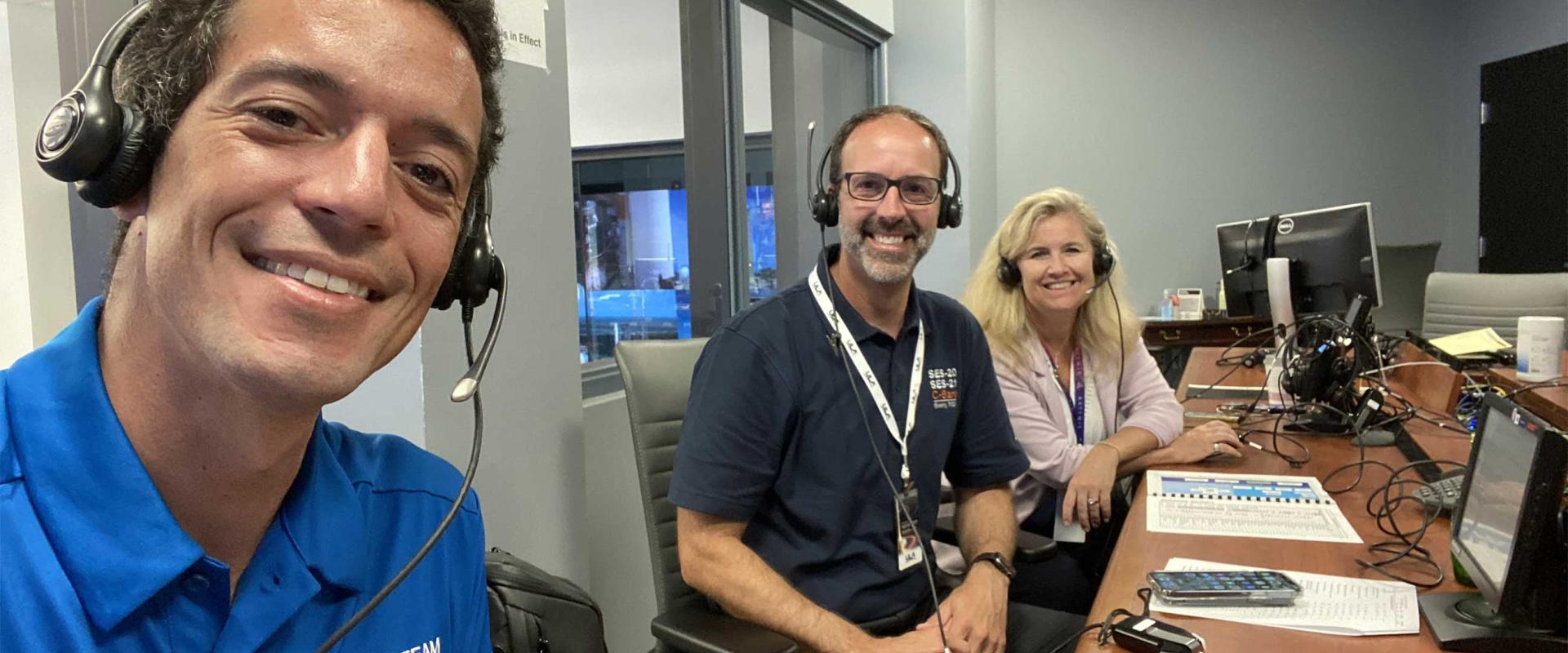SES Team Spotlight: Thyago Consort on Readying SES-20 and SES-21 C-band Satellites


Spacecraft Programs
In 2020, the Federal Communications Commission (FCC) set forth a plan asking satellite operators such as SES to clear 280 MHz of C-band spectrum to enable the nationwide rollout of 5G mobile services. To do so, SES has ordered and begun launching new satellites to provide the necessary capacity for our existing customers. Those new C-band satellites are based on reliable and flight-proven technology, providing even more better performance as well as coverage customized to our customers’ needs.
We spoke with Thyago Consort, Manager of Spacecraft Programs at SES, to learn more about how he helped get two of the new satellites, SES-20 and SES-21, ready for their successful launch on October 4, 2022.
What is your role in facilitating SES’s activities in the C-band transition?
I am the Program Manager responsible for the procurement of the new SES-20 and SES-21 satellites, which just launched on October 4. My role was to oversee the timely delivery of these two C-band satellites, built using Boeing’s 702SP platform, to ensure a smooth C-band transition while continuing to serve our existing customers.
As such, I acted as the go-between for Boeing and SES for all technical, schedule, and contractual matters. I’m embedded at Boeing, and a full-time resident in El Segundo, CA, working with the support of very experienced satellite engineers, most of whom previously worked for Boeing. Our job was to make sure the satellites were manufactured to SES’s specification on-time and within budget.
While SES-20 and SES-21 were being built and tested, I attended meetings at the factory and monitored the assembly integration and tests of SES-20 and SES-21 daily. I was also often in the cleanroom witnessing any critical operations, such as a solar array wing deployment or the satellite vibration tests.
How will SES satellites like SES-20 and SES-21 enable the rollout of 5G in the US?
The FCC wants to quickly repurpose the lower 280 MHz of the C-band spectrum to make space for 5G cell service, enabling US leadership on 5G. SES-20 and SES-21 are part of SES’s procurement of several new satellites so we can continue providing TV, radio services and critical data transmission services via C-band. These satellites were specifically designed to provide transponders in the upper C-band spectrum, so that SES can migrate customers away from the lower spectrum that will be used by US wireless operators for 5G.
SES-22 was successfully launched in June and is serving customers from the 135 degrees West orbital position. SES-20 and SES-21 will operate from the 103 degrees West and 131 degrees West orbital positions respectively. The launch of SES-20 and SES-21 was key for SES as we work to complete the migration of all C-band customers without interrupting any critical television services and fulfil our agreements with the FCC.
How has SES approached procuring and launching the new C-band satellites to meet the FCC’s deadlines?
The C-band transition required a reliable strategy to mitigate for adverse factors potentially compromising the migration. SES designed a procurement plan tolerant against potential schedule delays and technical issues, both common in the space industry, that could affect a given satellite or launch vehicle.
SES’s plan relied on the procurement of satellites from three different suppliers (Boeing, Northrop Grumman, and Thales Alenia Space) and two different launch vehicles (Atlas V from ULA and Falcon 9 from Space X). Boeing and Northrop Grumman satellite platforms have both the design capability to be stacked, thus allowing two satellites to be launched in tandem by the same rocket, increasing efficiency. Thales Alenia Space offered the fastest delivery schedule to begin our satellite transition, and exceeded expectations, without stacking capability. This is why SES launched the Thales Alenia Space SES-22 as a single satellite on Falcon 9 and launched Boeing SES-20 and SES-21 in tandem on Atlas V.
To meet the FCC’s accelerated clearing deadlines, our team went above and beyond to reach readiness for in-orbit operation on schedule, while ensuring the highest-quality standards of the new SES satellites.
What has been your most rewarding experience at SES so far?
I’m passionate about my work and I have been in the satellite procurement business for more than 15 years. This field requires strong interpersonal skills and presents challenges with a wide range of technical and programmatic difficulties. With the C-band transition, there’s an additional layer of complexity that drives me to keep looking for creative solutions minimizing delays. Satellite procurement is a 24/7 effort and sometimes requires our team to be on call during the night and weekends to manage critical integration activities.
SES-15 is the satellite dearest to me as it was extremely time-sensitive, similarly to the C-band satellites. I’m proud to have completed the satellite built ahead of the contractual delivery date, which enabled SES to rapidly deploy high-quality in-flight entertainment and connectivity to millions of airline passengers. I’m also blessed to work in a field that ends its projects’ life cycles with a beautiful launch!
